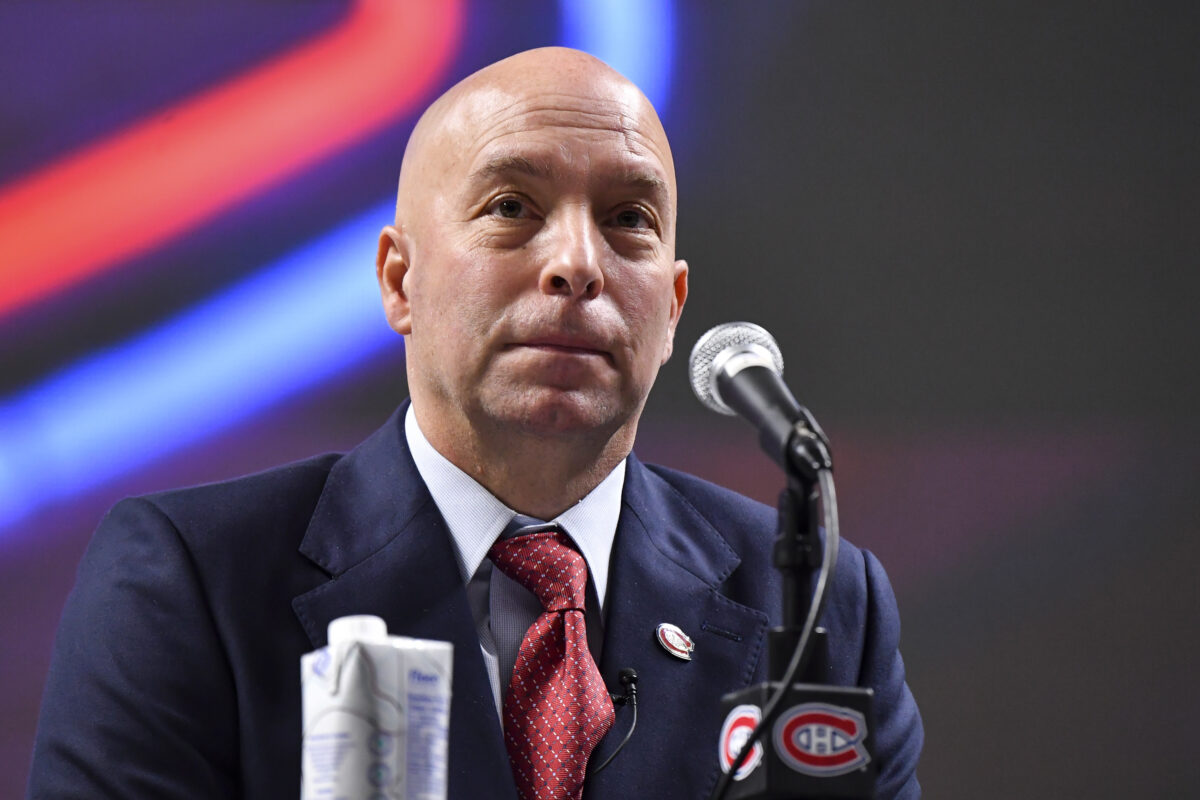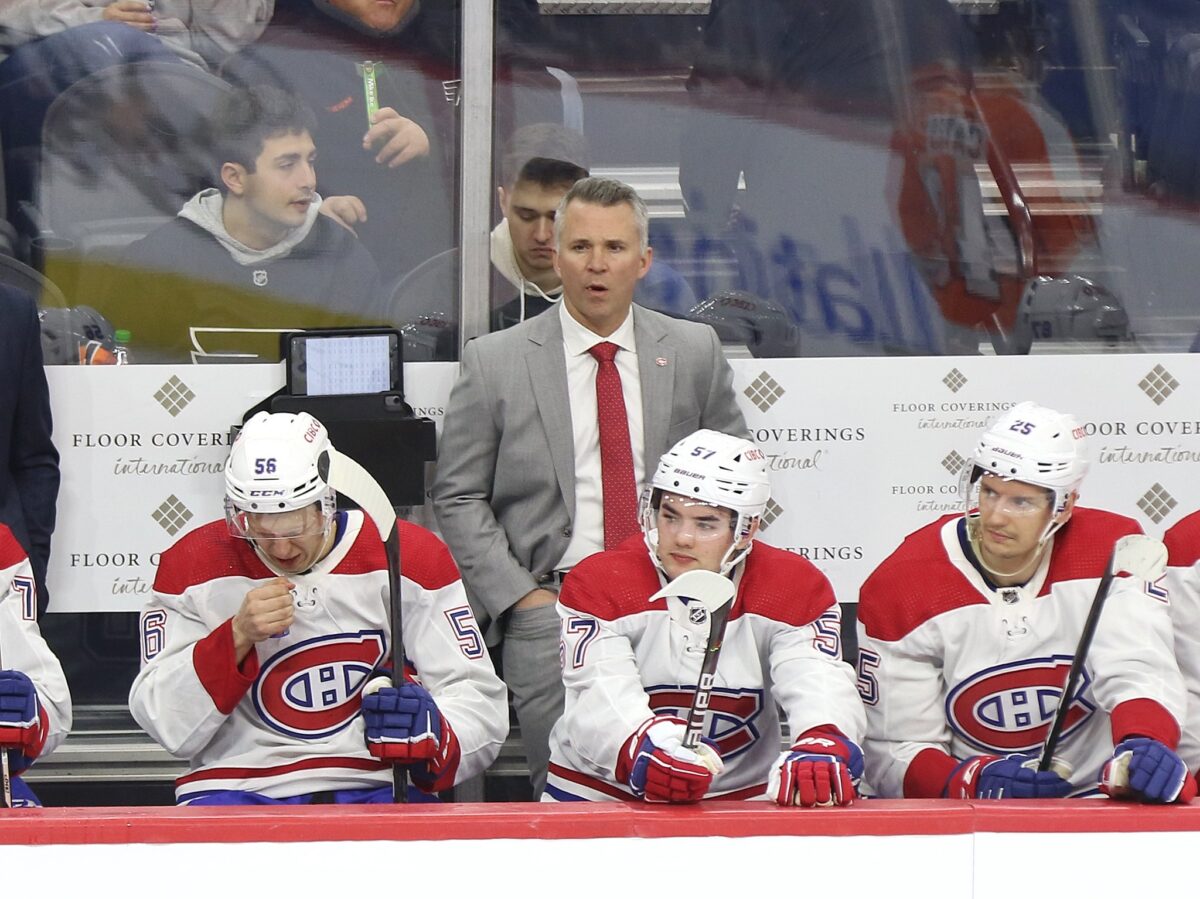Circle Feb. 2, 2024 in your calendars, if you’re a Montreal Canadiens fan. It may be atypical behaviour to look back to a date instead of forward, but there’s a method to the madness. That’s the day the Habs traded Sean Monahan to the Winnipeg Jets.

Even though they got regularly embarrassed in January, leading up to the trade, they still ended that month 5-5-3, at .500. For the non-mathematicians, over an 82-game season, that pace equates to 82 points. Heading into 2023-24, the Canadiens couldn’t have been faulted for making that total an unofficial goal, with a playoff spot even being quasi-realistic at one point (to some anyway).
Related: Canadiens Show Their True Selves as Sellers Ahead of 2024 Trade Deadline
Keep in mind, the Canadiens finished 2021-22 in last place with 55 points. They jumped to fifth-from-last-place in 2022-23 by gaining 13 points in the standings. Gaining another 13 points, into 82-point territory, was definitely within the realm of possibility for 2023-24, even as recently as the All-Star Game, when the Habs were 20-21-8. And then general manager Kent Hughes made the decision to move Monahan as early as he did, over a month before the March 8 trade deadline.
Canadiens Struggle by Design
From that point on, the Canadiens have gone 4-7-2, which equates to a .385 points percentage (P%). On the season, they’ve got one of .468. For some context, .385 would place them in third-from-last place overall, just behind the Anaheim Ducks (.395), who are so bad the Habs routed them 5-0 on Feb. 13 for one of the few wins since the trade.
The poor stretch shouldn’t be a shock. Monahan was such a key component of an offense that was admittedly below-average even with him still on the roster. He had scored 13 goals and 35 points in 49 games for the Canadiens, making him their third-highest scorer in both categories at the time of the trade.
The Canadiens’ return from the Jets was arguably fair compensation. However, it’s irrelevant to the point at hand: Without Monahan and the secondary scoring he brought to the table, they can’t be expected to compete like an average NHL team and hit those 82 points, which would have been a sure sign of progress in the context of the ongoing rebuild.
Now, trading Monahan when Hughes did was the right move from an asset-management perspective. The Calgary Flames had just dealt the arguable top centre available in Elias Lindholm and gotten a haul to set the market price for pivots. Plus, Monahan has a lengthy injury history. While Hughes maybe could have gotten more for him by waiting, the GM was simply protecting his investment to help secure the first-round pick many envisioned the Canadiens getting in return.

True, Monahan’s injury history includes a fairly notable entry in 2022-23. He played his last game in early December, contributing to the aforementioned fifth-from-last finish. However, ignoring the fact the groin injury he sustained could have been avoided by taking more precautions, the Canadiens had close to zero control over the situation then. Plus, if you want to itemize every injury from the last few seasons, Kirby Dach’s last October was arguably the biggest (excluding Carey Price, his injury problems kind of going back a decade or so). Losing Dach robbed the Canadiens of an arguable top-line-calibre player and their projected second-line centre for an entire campaign, effectively dashing all hopes the Habs would be competitive a few games into 2023-24.
2023-24 Canadiens Seasons Can Still Be a Success
Still, injuries are a part of the game. Trades are more so a part of the plan. Ultimately, Hughes made a conscious decision to trade Monahan when he did. So, the move must be interpreted as a part of that plan, even if it’s served as a painful indication that progress can’t always be measured linearly. There are nevertheless other metrics aside from points in the standings that show the Canadiens have matters well in hand. Ironically, even if they’re losing more often than in January, they’re putting up more of a fight in each of their recent losses.
However, if you’re of the firm belief that 2023-24 will be a failure, unless there’s a year-over-year increase in points in the standings, first off, you’re wrong. Second off, you can relax. Eighty-two points may be out of the question, but the Canadiens are just 10 points back of the 68 points they earned last season, with 20 games to play. They need to play even worse hockey than they have been recently (.275 P%) to get the 11 points to officially best their record from 2022-23.
Of course, to get to 82 points, they’d have to play .600 hockey the rest of the way, which is doable in theory… were it not for the fact the Canadiens face one of the hardest schedules down the stretch. Only five remaining games are against non-playoff teams. So, expectations must be mitigated, and it’s much easier on everyone’s mental health to just aim for 69, even if only for the jokes.

Even if the Canadiens somehow fail to get there in the end, their season technically ended on Feb. 2, when Hughes, properly assessing he didn’t have the guns to make a run at a playoff spot, pulled the trigger on the Monahan trade. It was the biggest bullet he had to shoot, almost making certain the 2024 trade deadline itself will be a quiet one for Habs fans.
Regardless, on Feb. 2, 2022, the Canadiens were 8-29-7, “good” for 23 points in 44 games. On Feb. 2, 2023, they were 20-27-4, with 44 points in 51 games. So, the 48 points in 49 games they had at that point in time in 2024 look positively peachy in comparison. There’s your year-over-year improvement in the standings, which will almost certainly grow wider in 2024-25.
Who knows? While Canadiens fans shouldn’t expect a busy 2024 deadline, come 2025 they may get to circle the date as buyers.
